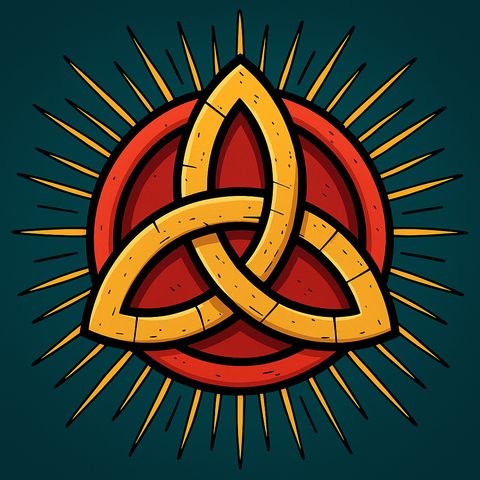
Timeline of the Trinity Doctrine
Simple statements about Jesus being God’s Son evolved into one of Christianity’s most complex and contested doctrines.
The journey from the early church to the formal Trinity doctrine spans centuries of debate and even conflict.
This development was marked by councils, creeds, and sometimes violent controversy. Through the medieval period, denial of the Trinity was a crime in many regions, leading to executions and persecution that would continue well into the modern era. The doctrine’s development also contributed to major church splits, including the divide between Eastern and Western Christianity.
Why important for us
Understanding the development of the Trinity doctrine is important for understanding how to translate the Bible correctly, as it may be tempting to insert views into the text that were not originally there.
Timeline
AD 30-33
Jesus and Others Make Statements About His Identity
Jesus and others state that he is sent by the Father as God’s Son, that he is the Messiah, that he came from heaven, was before Abraham, and existed alongside the Father before the world began.
Jesus described himself in ways that would, in later centuries, be considered heretical if said by others when describing him. For example, being subordinate to the Father, and that the Father is greater than him.
Matthew 3:16-17, 11:25-27, 16:15-17, 23:9-10, 24:36, 26:39, 26:53, 26:63-64, 27:46
John 1:1-3, 1:14, 1:15, 1:29-30, 5:19-23, 5:45, 6:37, 6:44, 8:29, 8:42, 8:58, 12:48-50, 14:28, 16:27-28, 17:4-8, 19:7, 20:17, 20:28.
AD 33
Execution of Jesus
Jesus was executed by crucifixion. The scriptures describe him as having ‘suffered and died’ (Hebrews 2:9), being freed ‘from the cords of death’ by resurrection (Acts 2:24), and becoming ‘obedient until his death’ (Philippians 2:8).
AD 46-98?
Apostles Make Statements About Jesus’ Identity
The Apostles write that Jesus is the Messiah, the Son of God, the Son of Man, that he had a pre-existence in divine form, that he needed voluntary humility to become human, that he was the firstborn of creation, and that he was the unique Son of God.
Examples include Philippians 2:5-11, Colossians 1:13-18, and 1 John 5:5.
AD 155-160
Justin Martyr’s ‘Dialogue with Trypho’
Justin Martyr writes that Jesus is ‘another God’ distinct from the Father, stating: ‘There is another God and Lord subject to the Maker of all things.’ This represents one of the earliest attempts to explain Jesus’ divine nature while maintaining monotheism.
AD 170-175
Tatian’s ‘Address to the Greeks’
Tatian, a student of Justin Martyr, offers his interpretation of the pre-existing Logos (Word) concept, describing it as God’s ‘first-begotten work’ and explaining how the Word ‘sprang forth’ from God’s simple unity. His particular understanding would later be considered problematic by both trinitarians and Arians.
AD 180-185
Irenaeus’s ‘Against Heresies’
Irenaeus tries to explain how God, Jesus, and the holy breath work together in a form he called oikonomia. He compares it to how a king might use different officials to carry out his will - they’re all working as part of the same kingdom, but with different roles. This was one of the first attempts to explain how Jesus could be divine while still being distinct from God the Father.
AD 190
Theodotus of Byzantium Excommunicated
Theodotus of Byzantium, a leather worker and biblical scholar, is excommunicated by Pope Victor I for teaching that Jesus was born a mere man and only later inhabited by Christ at his baptism. This ‘adoptionist’ view becomes one of the first officially condemned beliefs about Jesus’ nature.
Establishing the exact nature of Jesus’ divinity now becomes an important way of controlling sectarianism and preventing heresy.
AD 200-210
Tertullian Coins ‘Trinity’
Tertullian becomes the first to use the Latin term trinitas to describe God, though his understanding was very different from modern Trinity doctrine.
He saw the Son and Spirit as extensions flowing from the Father (like rays from the sun), rather than as equal persons. For Tertullian, the Father was the source and the greater being, with the Son and Spirit being lesser divine powers that came from Him.
AD 215-230
Sabellius Develops Modalism
Sabellius teaches that Father, Son, and Spirit are three ‘modes’ or ‘aspects’ of one God.
His teaching, known as Modalistic Monarchianism or Sabellianism, is opposed by several church fathers for denying that Father and Son are separate persons. This controversy helped shape later trinitarian theology by clarifying what it was not.
AD 268
Council of Antioch: Rejects Homoousios
In an interesting twist, this council explicitly rejects the term homoousios (same substance) while condemning a related issue. This is ironic, as this is the very term that would later become central to the Trinity doctrine.
AD 318-320
The Arian Controversy Begins
Arius, a presbyter in Alexandria, becomes a prominent defender of the long-held view that Jesus, while divine, was created by God and therefore had a beginning.
This understanding, which saw Jesus as subordinate to the Father, had been common among early Christians, as evidenced in writings of Justin Martyr (AD 155-160) and others. However, Arius’s vocal advocacy brings this belief into direct conflict with emerging doctrines about Jesus’ nature, causing significant debate throughout the Christian world.
AD 324
Constantine Intervenes
Emperor Constantine, concerned about church unity, sends a letter to Alexander (the Bishop of Alexandria) and Arius urging reconciliation. When this fails, he calls for the Council of Nicaea.
AD 325
The Council of Nicaea: God and Jesus the same ‘substance’
The first ecumenical council, convened by Emperor Constantine I, establishes the first version of the Nicene Creed. The council declares Jesus to be ‘true God from true God,’ ‘begotten, not made,’ and ‘of one substance (homoousios) with the Father,’ explicitly rejecting the idea that there was ever a time when the Son did not exist.
AD 357
The Second Council of Sirmium: Rebellion against Nicaea
Known as the Blasphemy of Sirmium, this council produces a strongly anti-Nicene creed that forbids use of the term ‘substance’ (ousia) when talking about God. Even though it was signed by many bishops, including Hosius of Cordova (who had presided at Nicaea), it’s later rejected by both sides of the debate.
AD 360
Council of Constantinople: A compromise!
This council enforces the Homoian compromise, declaring that the Son is ‘like’ (homoios) the Father, while forbidding any discussion of ‘substance.’ For a brief time, this becomes the official doctrine of the Empire under Constantius II.
AD 376-382
Arianism Spreads to the Goths
The Gothic leader Fritigern accepts Arian Christianity through the missionary work of Ulfilas (also called Wulfila). Ulfilas translates the Bible into Gothic, spreading Arian Christianity among the Gothic peoples. This version of Christianity would become dominant among many Germanic tribes, including the Vandals, Lombards, and Ostrogoths.
AD 380
Theodosius Makes Nicene Christianity Official
Emperor Theodosius I issues the Edict of Thessalonica, making Nicene Christianity the state religion of the Roman Empire and declaring Arianism heretical. This begins the systematic suppression of Arian Christianity within Roman territories. This marks the first time that a specific understanding of Jesus’ nature becomes legally enforced.
AD 381
First Council of Constantinople: Co-Eternal Trinity Defined
The council expands the Nicene Creed, explicitly declaring the Son to be co-eternal with the Father and adding detailed statements about the Holy Spirit now being a third person of the Trinity (rather than a mere divine force). The resulting Nicene-Constantinopolitan Creed becomes the first complete expression of what we now know as Trinity doctrine, teaching that Father, Son, and Spirit are equally eternal, uncreated, and divine persons.
AD ~400
The Johannine Comma First Appears
The trinitarian phrase ‘there are three that bear record in heaven, the Father, the Word, and the Holy Ghost: and these three are one’ first appears in Priscillian of Ávila's Latin work Liber Apologeticus. It would later be inserted into Latin Vulgate manuscripts, though it’s notably absent from the oldest copies of the Vulgate Bible translation.
AD 431
Council of Ephesus: Mary is ‘God-bearer’
The Council of Ephesus affirms Mary as Theotokos (God-bearer), implying Jesus’ full divinity from birth, and condemns Nestorianism which suggested a division between Jesus’ human and divine natures.
AD 449
Second Council of Ephesus: Jesus has only one nature
This council supports monophysitism, the belief that Jesus had only one nature - divine, leading to increased tensions between Eastern and Western churches over Christ’s nature.
AD 451
Council of Chalcedon: Jesus has two natures
The Council of Chalcedon rejects monophysitism and establishes the orthodox position that Christ has two natures - fully human and fully divine - united in one person. This leads to the first major split in Christianity, with Oriental Orthodox churches (in Egypt, Syria, and Armenia) rejecting the council’s decision.
AD 496-600s
Frankish Conversion Marks Arianism’s Decline
Clovis I, king of the Franks, converts to Nicene Christianity rather than Arian Christianity. This proves pivotal as the Franks become the dominant Germanic power, gradually leading other Germanic peoples to abandon Arianism. The Burgundians convert in 516, followed by the Visigoths in 589 and the Lombards in the late 600s.
AD 1014
‘Filioque’ Added to Roman Creed
Pope Benedict VIII officially adds the word filioque (and the Son) to the Nicene Creed in Rome, formalizing the Western view that the Holy Spirit proceeds from both Father and Son. This addition becomes a major point of contention between Eastern and Western churches.
AD 1054
The Great Schism
While primarily about papal authority, differences over the nature of Christ and the Trinity (particularly the ‘filioque’ clause about whether the Holy Spirit proceeds from both Father and Son) contribute to the formal split between Eastern Orthodox and Roman Catholic churches.
AD ~1400
First Greek Manuscript with ‘Johannine Comma’
The trinitarian addition to 1 John 5:7-8 appears in a Greek manuscript for the first time, approximately 1,300 years after John wrote his letter. This late addition finds its way into some Bible translations.
AD 1539
Anabaptists Executed in England
Several Dutch Anabaptists are executed in England for denying the Trinity, marking the first executions for this specific charge in England. King Henry VIII personally interrogates some of the accused.
AD 1553
Servetus Executed for Anti-Trinitarian Views
Michael Servetus, a Spanish theologian and physician, is burned at the stake in Calvin's Geneva for denying the Trinity doctrine and infant baptism. His execution causes significant controversy even among other reformers, leading to important debates about religious tolerance.
AD 1565
Rise of the Polish Brethren
A group of Polish nobles and scholars establish the ‘Minor Reformed Church of Poland,’ later known as the Polish Brethren. They reject the Trinity doctrine and infant baptism, developing a significant body of anti-trinitarian literature that influences later Unitarian movements.
AD 1600
Spanish Inquisition Targets Anti-Trinitarians
The Spanish Inquisition intensifies its persecution of suspected ‘Judaizers’ and anti-trinitarians. Unlike in England, where heresy charges required specific denials of doctrine, Spanish authorities could prosecute based on mere suspicion of unorthodox beliefs about the Trinity.
AD 1612
Bartholomew Legate Burned Alive
Bartholomew Legate is burned at the stake at Smithfield, London, for denying Christ’s divinity and the Trinity. He is the last person to be executed in London for ‘heresy,’ though others would face imprisonment and persecution.
Edward Wightman Becomes Last English Heresy Execution
Edward Wightman is burned at the stake in Lichfield, becoming the last person executed for heresy in England. Among his alleged heresies was the denial of the Trinity and the claim that the Holy Spirit was not God but merely a divine energy.
His execution was particularly gruesome - when first set alight, he managed to pull free from his chains due to the pain. The authorities had to go through the entire burning process twice.
AD 1641
Colonial America Mandates the Trinity
Massachusetts Bay Colony establishes its first law making denial of the Trinity a capital offense. Several other colonies follow suit with similar laws.
AD 1658
Fall of the Polish Brethren
The Polish parliament votes to expel the Polish Brethren from the country, forcing most to flee to Transylvania, the Netherlands, and Prussia.
AD 1668
Danish Law Code Establishes Death Penalty
Christian V's Danish Law Code establishes death penalty for anti-trinitarian views. This law would remain technically in force until 1866, though it was rarely enforced after the mid-1700s.
AD 1690
Sir Isaac Newton Writes Against the Trinity
Sir Isaac Newton writes his treatise An Historical Account of Two Notable Corruptions of Scripture, arguing against the authenticity of two key trinitarian proof texts: 1 John 5:7-8 and 1 Timothy 3:16.
It’s not published until 1754, decades after his death, due to fear of persecution.
AD 1697
Thomas Aikenhead Trialed and Executed
Thomas Aikenhead, a 20-year old student, goes on trial in Edinburgh. The prosecution specifically cited his rejection of the Trinity and his description of the doctrine as ‘contradictory’ as evidence of blasphemy.
He is found guilty and hanged. He was the last person in Britain to be executed for blasphemy.
AD 1787
Habsburg Empire Maintains Restrictions
Despite Joseph II's Edict of Tolerance, anti-trinitarian groups remain explicitly excluded from religious freedom in the Habsburg territories. Only Catholics, Lutherans, Calvinists, and Orthodox Christians receive legal recognition.
AD 1825
‘Denying the Trinity’ Legalized in England
The British Parliament repeals the Doctrine of the Trinity Act 1813, which had made it a criminal offense to deny the Trinity doctrine. Previously, individuals had faced imprisonment for questioning trinitarian doctrine.
AD 1830-1850
Latin American Independence Maintains Trinity Requirements
As Latin American nations gain independence from Spain, most maintain Catholic orthodoxy in their constitutions. Several countries, including Mexico and Colombia, require public officials to swear trinitarian oaths until constitutional reforms in the late 19th century.
AD 1833
America Repeals Trinity Laws
Massachusetts is one of the last US states to repeal its laws against denial of the Trinity.
AD 1700s-1800s
Rise of Non-Trinitarian Movements
Several significant non-trinitarian religious movements emerge during this period:
- The Christadelphians (1844) - Founded by John Thomas, teaching that Jesus is the Son of God but not God himself.
- The Seventh-day Adventist Church (1863) - Initially non-trinitarian under Ellen G. White’s leadership.
- Bible Students Movement (1870s) - Founded by Charles Taze Russell, teaching that Jesus is God’s first creation. Later developed into the Jehovah’s Witnesses.
- The Church of God (Seventh Day) (1863) - Maintaining a non-trinitarian position while emphasizing biblical monotheism.
- The Latter Day Saint movement (1830) - Founded by Joseph Smith, teaching that the Father, Son, and Holy Spirit are separate beings.
- The Unitarian Church expands significantly in America under William Ellery Channing and others.
- The New Church (Swedenborgian) grows - Following Emanuel Swedenborg’s teachings that God is one person, Jesus Christ.
- Oneness Pentecostalism begins to emerge - Teaching that Father, Son, and Holy Spirit are different manifestations of one God.
- Biblical Unitarianism develops as a distinct movement - Emphasizing biblical study over philosophical reasoning.
These movements often faced significant opposition from mainstream churches but found growing acceptance as religious tolerance increased. Many of them continue to exist today with substantial followings.
AD 1866-1890s
Last Legal Restrictions Against Anti-Trinitarians End
The last government restrictions on anti-trinitarian beliefs are removed:
- Denmark repeals its 1683 law prescribing death penalty for anti-trinitarian views (1866).
- The Habsburg Empire maintains restrictions on anti-trinitarian groups until its dissolution (1918), though active persecution had largely ceased by the late 1800s.
This marks the end of state-enforced trinitarian orthodoxy in Europe, though social and religious discrimination would continue.
AD 1881
First Major English Bible Removes Johannine Comma
The Revised Version becomes the first widely-used English Bible to remove the fraudulent trinitarian addition to 1 John 5:7-8 from its main text, relegating it to a footnote. Later translations would follow suit.
Timelines: Bible History
-

-
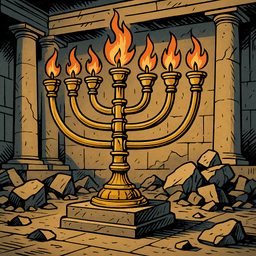
-
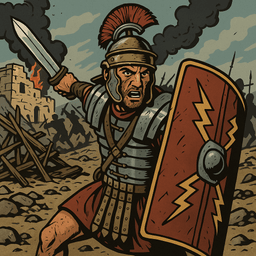
-

-

Timelines: Doctrines
-
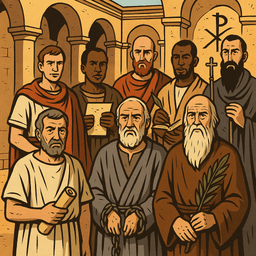
-
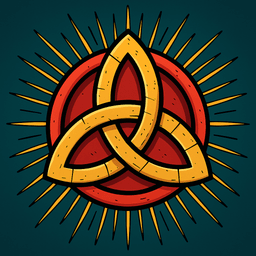
-
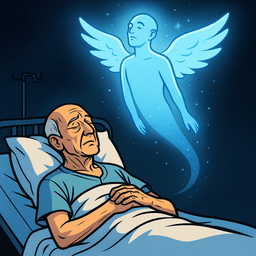
-
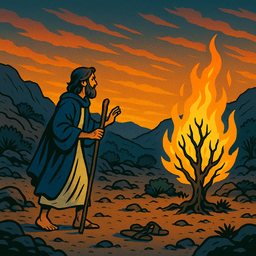
Timelines: Miscellaneous
-
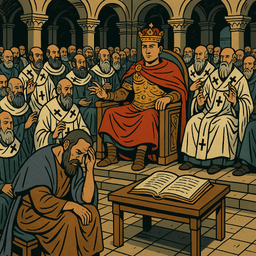
-
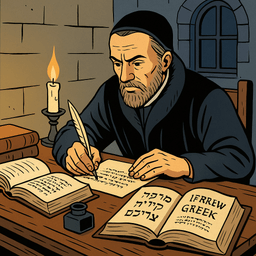
-

-
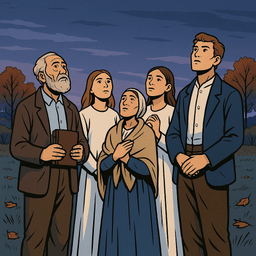
Also see our Articles index and our About section.